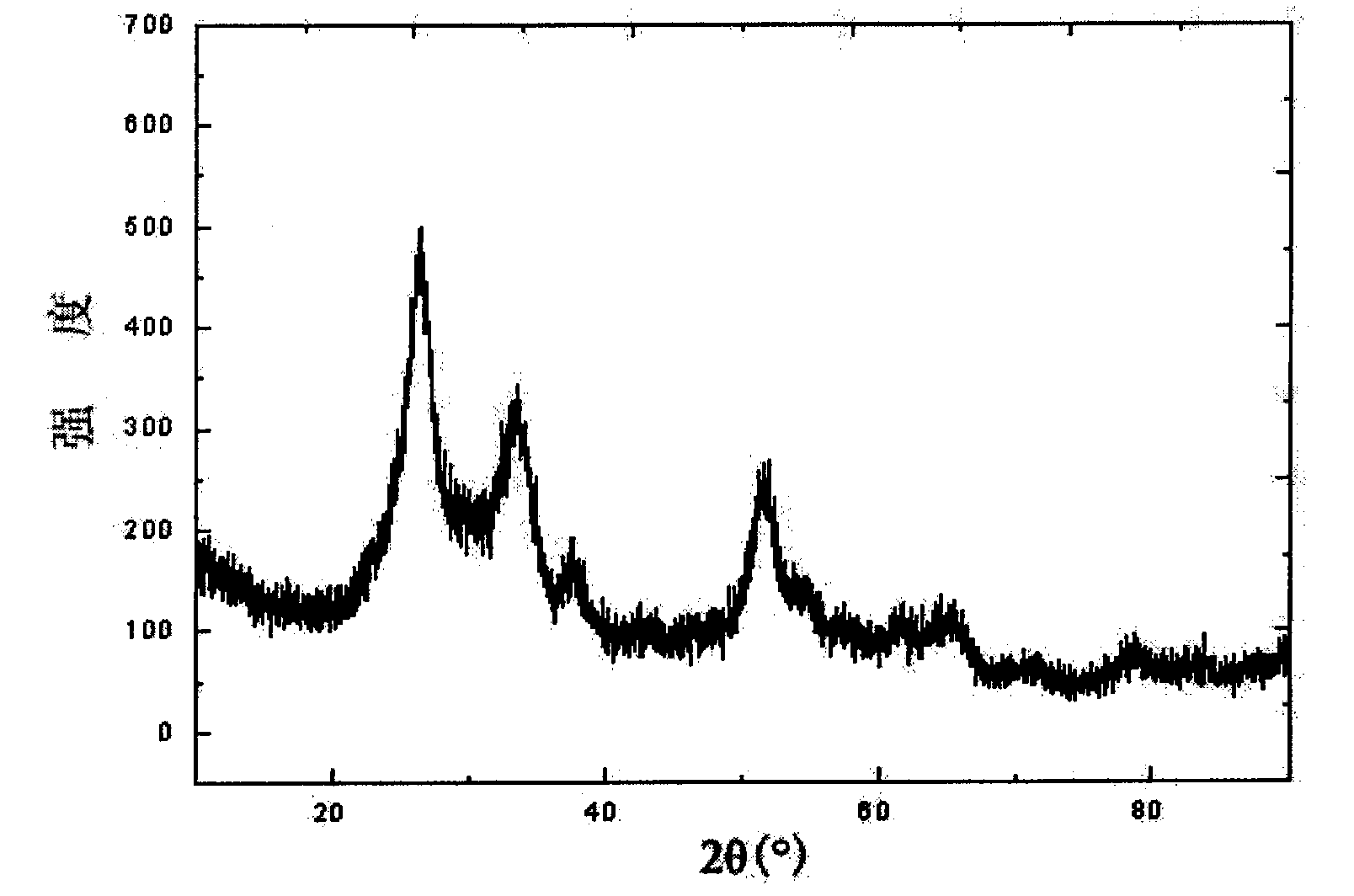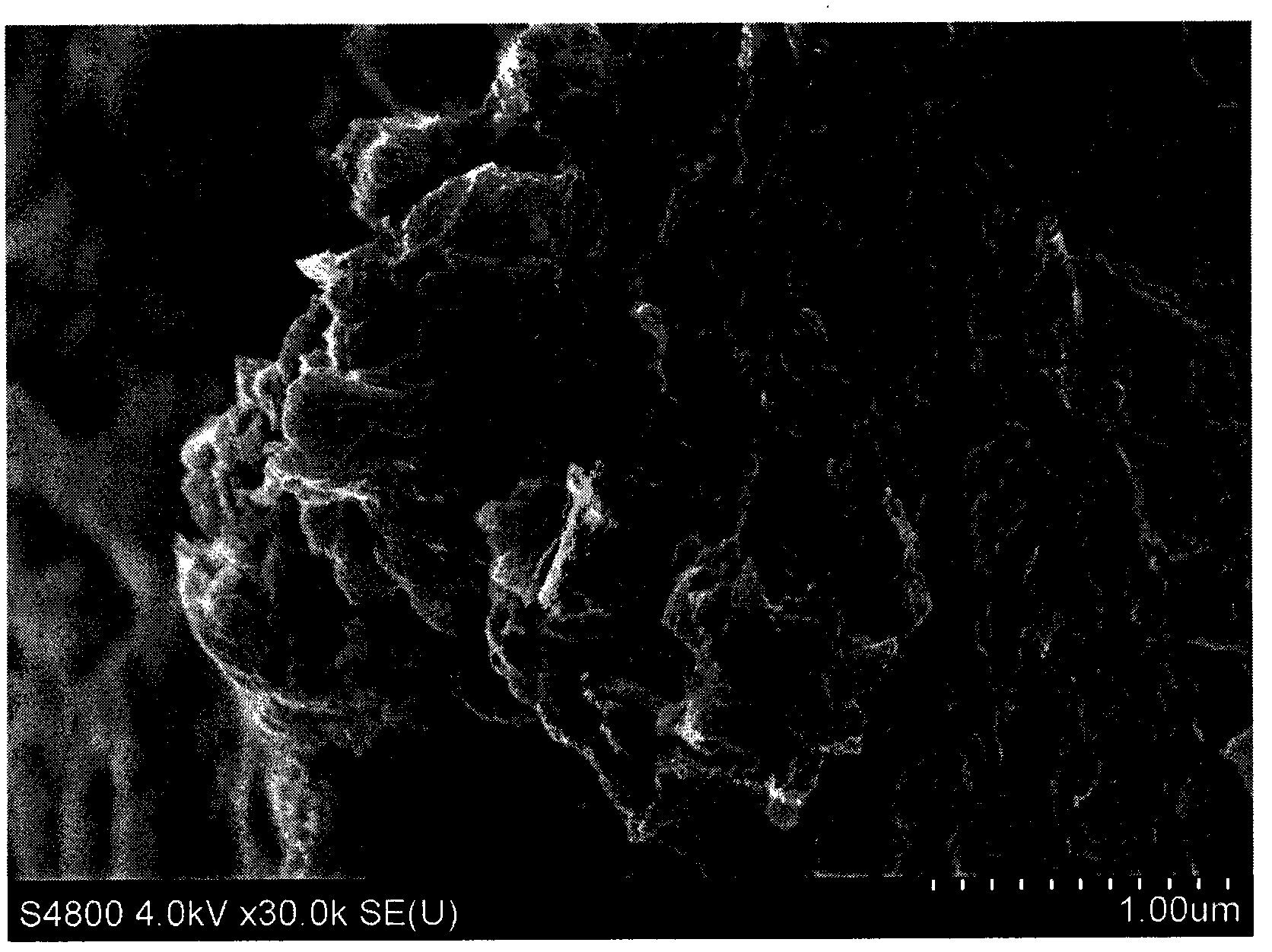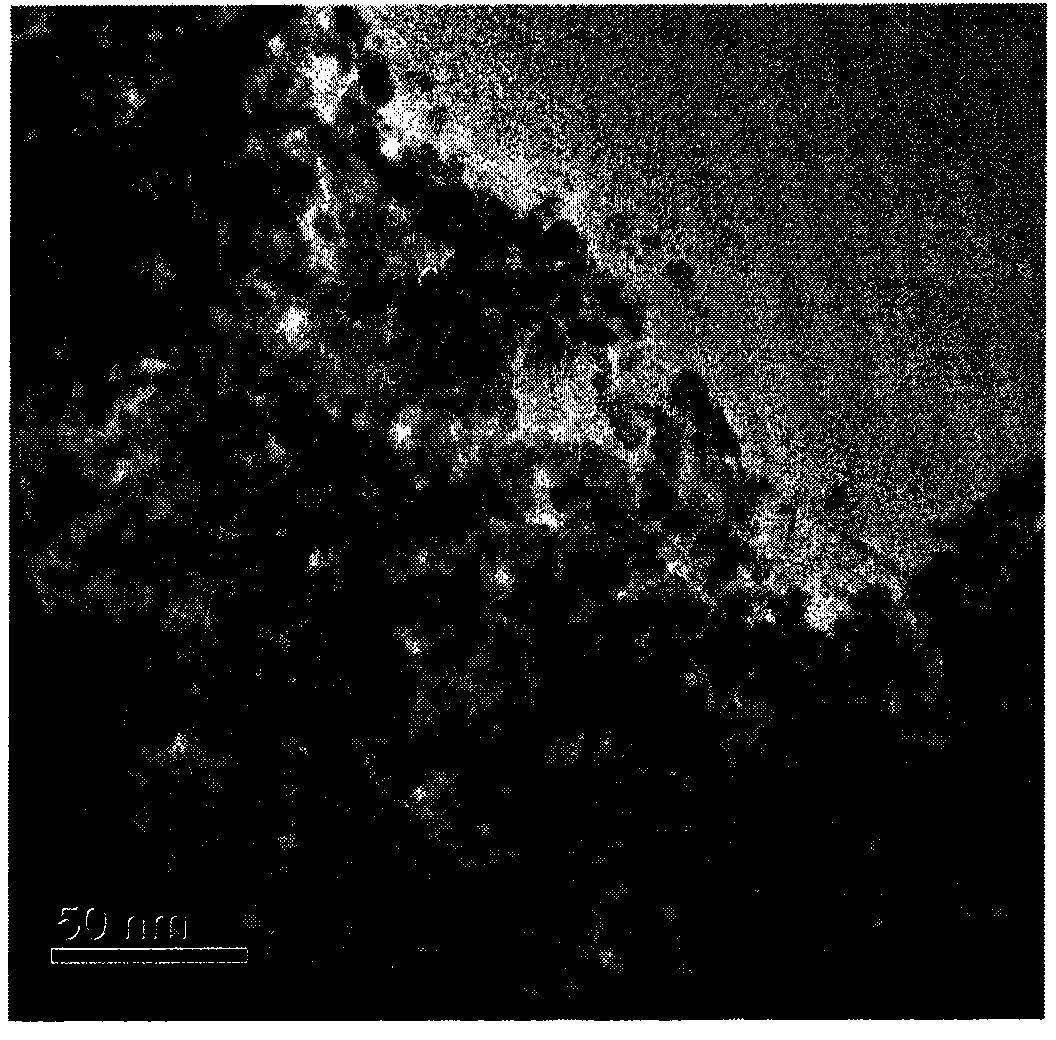Preparation method of stannic oxide or metallic tin and grapheme lamella composite material
A graphene sheet, composite material technology, applied in electrical components, battery electrodes, circuits, etc., can solve the problems of metal tin particle coating structure, difficult to control product morphology, low charge and discharge performance of composite materials, etc. Conductivity and rapid charge-discharge performance, improving structural stability and electrochemical performance, and improving the effect of charge-discharge cycle stability
- Summary
- Abstract
- Description
- Claims
- Application Information
AI Technical Summary
Problems solved by technology
Method used
Image
Examples
preparation example Construction
[0030] The present invention provides a method for preparing tin dioxide and graphene sheet layer composite material. The method includes mixing an organic solvent, graphene oxide sheet layer hydrosol and tin salt, and heating at 60-200°C for 0.5- 12h to obtain a solid substance; the obtained solid substance is heated under the protection of inert gas at a temperature of 400-700°C for 0.5-10h. Preferably, the organic solvent, graphene oxide sheet hydrosol and tin salt are mixed, and then heated at 120-150°C for 0.5-3h to obtain a solid substance; the obtained solid substance is heated at 400-700 under the protection of inert gas Heat 0.5-2h at a temperature of ℃.
[0031] According to a method for preparing tin dioxide and graphene sheet layer composite material provided by the present invention, the volume ratio of the graphene oxide sheet layer hydrosol to the organic solvent is 1:10-50, and the reaction pH is 2-6 The content of graphene oxide flakes in the graphene oxide flak...
Embodiment 1
[0042] This embodiment is used to illustrate the preparation method of the tin dioxide and graphene sheet-layer composite material provided by the present invention.
[0043] (1) Preparation of graphene oxide: Add 5.0g of natural flake graphite (particle size 10-100μm), 4.0g of sodium nitrate and 20.0g of permanganic acid to 300g of 98% by weight concentrated sulfuric acid Potassium, the resulting mixture was stirred for 2 hours under an ice bath at 0°C (that is, the temperature of the mixture was set to 0°C through an ice bath), and then stirred at 30°C for 5 hours; then 600ml of water was added to the resulting mixture for dilution, Warm up to 90°C and stir for 0.5h; add 10ml of hydrogen peroxide with a concentration of 30% by weight, stir for 30min and filter, and then wash the resulting filter cake with hydrochloric acid with a concentration of 3% by weight at a speed of 5000r / min for 5 times , Followed by centrifugal washing 5 times with deionized water at a speed of 5000r / m...
Embodiment 2
[0051] This embodiment is used to illustrate the preparation method of the tin dioxide and graphene sheet-layer composite material provided by the present invention.
[0052] (1) Preparation of graphene oxide: Add 5.0g of natural flake graphite (particle size 10-100μm), 5.0g of sodium nitrate and 25.0g of permanganic acid to 1500g of 98% by weight concentrated sulfuric acid Potassium, the resulting mixture was stirred for 5 hours under an ice bath at 0°C (that is, the temperature of the mixture was set to 0°C through the ice bath), and then stirred at 30°C (30°C) for 10 hours; then 500ml was added to the resulting mixture Dilute with water, then heat to 70℃ and stir for 2h; then add 6ml of hydrogen peroxide with a concentration of 30% by weight, stir for 60min and then filter, and then use hydrochloric acid with a concentration of 10% by weight at 5000r / min. Centrifugal washing 5 times at the speed of 5 times, and then centrifugal washing 5 times with deionized water at 5000r / min...
PUM
| Property | Measurement | Unit |
|---|---|---|
| particle diameter | aaaaa | aaaaa |
| diameter | aaaaa | aaaaa |
| particle diameter | aaaaa | aaaaa |
Abstract
Description
Claims
Application Information
 Login to View More
Login to View More - R&D
- Intellectual Property
- Life Sciences
- Materials
- Tech Scout
- Unparalleled Data Quality
- Higher Quality Content
- 60% Fewer Hallucinations
Browse by: Latest US Patents, China's latest patents, Technical Efficacy Thesaurus, Application Domain, Technology Topic, Popular Technical Reports.
© 2025 PatSnap. All rights reserved.Legal|Privacy policy|Modern Slavery Act Transparency Statement|Sitemap|About US| Contact US: help@patsnap.com



